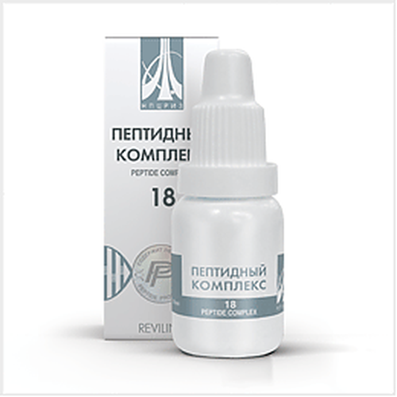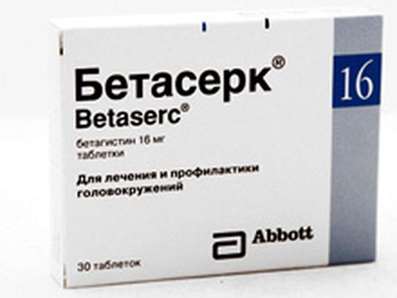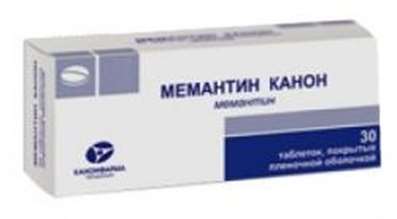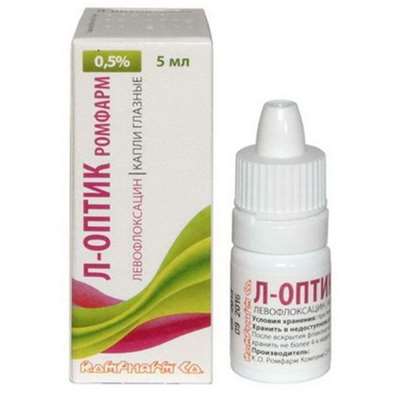Instruction for use: Asprovit C
I want this, give me price
Active substance Acetylsalicylic acid + Ascorbic acid
Dosage form
Effervescent tablets
Composition
One effervescent tablet contains
Active substances:
Acetylsalicylic acid - 400 mg, ascorbic acid - 300 mg;
Excipients:
Sodium bicarbonate - 1973 mg, citric acid anhydrous - 1138 mg, glycine - 100 mg, sodium benzoate - 48 mg, povidone - 1 mg, flavoring orange - 40 mg.
Description of dosage form
Plane-cylindrical tablets of white or white color with impregnations of yellow color, with a facet, with a specific smell. On the break, the tablet is white in color or white with interspersed yellow.
Pharmacological group
Analgesic combined (NSAIDs + Vitamin).
pharmachologic effect
Combined drug, the effect of which is determined by the components that make up its composition.
Acetylsalicylic acid (ASA) indiscriminately depresses COX1 and COX2, disrupting the metabolism of arachidonic acid, reducing the synthesis of prostaglandins (Pg). Has a strong analgesic, antipyretic and anti-inflammatory effect; reduces the synthesis of thromboxane and inhibits the aggregation of platelets, lowering the coagulation status of the blood.
Ascorbic acid participates in the regulation of oxidation-reduction processes, carbohydrate metabolism, blood coagulability, tissue regeneration, in the synthesis of steroid hormones; increases the body's resistance to infections, reduces vascular permeability, reduces the need for vitamins B1, B2, A, E, folic acid, pantothenic acid. Satisfies the increased needs of the body in vitamin C for diseases accompanied by fever.
Pharmacokinetics
Acetylsalicylic acid in the body circulates and is distributed in tissues as an anion of salicylic acid. Salicylates easily penetrate into many tissues and body fluids, including. in spinal, peritoneal and synovial fluid. Salicylic acid is metabolized predominantly in the liver, excreted mainly by active secretion in the tubule of the kidneys in the form of salicylic acid proper and all metabolites. When ingested quickly absorbed mainly from the proximal part of the small intestine and to a lesser extent from the stomach. The presence of food in the stomach significantly alters the absorption of acetylsalicylic acid.
Ascorbic acid, after ingestion, is completely absorbed from the digestive tract. Widely distributed in the tissues of the body. Ascorbic acid reversibly oxidizes with the formed dehydroascorbic acid, part is metabolized with the formation of ascorbate-2-sulfate, which is inactive, and oxalic acid, which is excreted in the urine. Adopted in excessive amounts, is quickly excreted unchanged in the urine.
Indications
Pain syndrome of different genesis in adults (headache, toothache, migraine, neuralgia, muscle pain, menstruation pain). The raised temperature of a body at cold and other infectious-inflammatory diseases (at patients is more senior 18 years).
Contraindications
Erosive-ulcerative lesions of the gastrointestinal tract in the acute phase, gastrointestinal bleeding, combined use with methotrexate at a dose of 15 mg per week or more, a complete or incomplete combination of bronchial asthma, recurrent nasal polyposis and paranasal sinuses and intolerance to acetylsalicylic acid or others. non-steroidal anti-inflammatory drugs (including history), hemophilia, hemorrhagic diathesis, hypoprothrombinemia, avitaminosis K, pronounced renal dysfunction, pregnancy, the period of breastfeeding hypersensitivity to acetylsalicylic acid and other salicylates, deficiency of glucose-6-phosphate dehydrogenase, portal hypertension, children and adolescence (up to 18 years).
Carefully:
With liver and kidney disease, with bronchial asthma, erosive and ulcerative lesions and bleeding from the gastrointestinal tract in an anamnesis, with increased bleeding or with simultaneous carrying out anticoagulant therapy. With concomitant therapy with anticoagulants, gout, peptic ulcer and / or duodenal ulcer (in the anamnesis), erosive gastritis, and a tendency to gastrointestinal bleeding, hypovitaminosis K, anemia, conditions predisposing to fluid retention in the body (incl. violation of heart function, arterial hypertension), thyrotoxicosis. If you have any of these diseases, consult a doctor before taking the drug.
pregnancy and lactation
The use of the drug is contraindicated in the I and III trimesters of pregnancy, since it has a teratogenic effect. The use of the drug in the second trimester of pregnancy is contraindicated in connection with the inability to carry out the dosage regimen in this dosage form. The use of the drug is contraindicated in the period of breastfeeding, as acetylsalicylic acid is excreted in breast milk, which increases the risk of bleeding in the child due to impaired platelet function.
Dosing and Administration
Is taken internally. Preliminary, the tablet is dissolved in a beaker of drinking water (200 ml) at room temperature. In case of pain syndrome and fever, a single dose is 1-2 tablets every 4-6 hours, the maximum daily dose should not exceed 6 tablets. The duration of treatment (without consulting a doctor) should not exceed 5 days with an appointment as an anesthetic and more than 3 days - as an antipyretic.
Side effects
The frequency of side effects is presented in the following classification: very frequent (≥10%), frequent (≥1% and <10%), infrequent (≥0,1% and <1%), rare (≥0,01% and <0 , 1%), very rare (<0.01%).
From the gastrointestinal tract: often - nausea, vomiting, decreased appetite, epigastric pain, diarrhea; rarely - the occurrence of erosive and ulcerative lesions, bleeding in the gastrointestinal tract, impaired liver function and depletion of the insulin apparatus of the pancreas, increased activity of "liver" transaminases.
From the side of the central nervous system: with prolonged use, dizziness, headache, reversible visual impairment, tinnitus, deafness are possible.
From the hemopoietic system: rarely - thrombocytopenia, anemia, hyperbilirubinemia.
On the part of the blood coagulation system: rarely - hemorrhagic syndrome, lengthening bleeding time.
From the urinary system: rarely - a violation of kidney function; with prolonged use - acute renal failure, nephrotic syndrome.
Allergic reactions: rarely - skin rash, Quincke's edema, bronchospasm, malignant exudative erythema (Stevens-Johnson syndrome), toxic epidermal necrolysis (Lyell's syndrome). When such symptoms appear, it is recommended to stop taking the drug and immediately consult a doctor.
Overdose
Symptoms: with light intoxication - nausea, vomiting, gastralgia, dizziness, ringing in the ears. After a severe overdose, retardation, drowsiness, collapse, convulsions, shortness of breath, anuria, bleeding. Initially, central hyperventilation of the lungs leads to respiratory alkalosis (dyspnea, choking, cyanosis, sweating). With increasing intoxication, progressive paralysis of respiration and dissociation of oxidative phosphorylation cause respiratory acidosis.
Treatment: continuous monitoring of CBS and electrolyte balance; depending on the state of metabolism - the introduction of sodium bicarbonate, sodium citrate or sodium lactate. Increased reserve alkalinity increases the excretion of ASA due to alkalinization of urine.
Interaction
Acetylsalicylic acid increases the toxicity of methotrexate (enhancing its renal clearance), valproic acid. Strengthens the effects of other NSAIDs, narcotic analgesics, oral hypoglycemic drugs, heparin, indirect anticoagulants, thrombolytic and antiaggregants, sulfonamides (including cotrimoxazole), triiodothyronine. Reduces the effect of uricosuric medicines (benzbromarone, sulfinpyrazone), hypotensive drugs, diuretics (spironolactone, furosemide). Glucocorticosteroids, ethanol and ethanol containing preparations increase the damaging effect on the mucous membrane of the gastrointestinal tract, increase the risk of developing gastrointestinal bleeding. Increases the concentration of digoxin, barbiturates, lithium salts in blood plasma. Antatsida, containing magnesium and / or aluminum hydroxide, slow down and worsen the absorption of acetylsalicylic acid. The use with other NSAIDs increases the risk of developing unwanted reactions from the gastrointestinal tract. Myelotoxic drugs increase the manifestation of hematotoxicity of acetylsalicylic acid.
Ascorbic acid increases the concentration in the blood of benzylpenicillin and tetracyclines, at a dose of 1 g / day increases the bioavailability of ethinyl estradiol (including oral contraceptives), improves absorption in the intestine of iron preparations: it can increase excretion of iron with simultaneous use with deferoxamine. Reduces the effectiveness of heparin and indirect anticoagulants. Kidney acid excretion, increases the excretion of drugs that have an alkaline reaction (including alkaloids), reduces the concentration of oral contraceptives in the blood. With simultaneous use reduces the chronotropic effect of isoprenaline. Reduces the therapeutic effect of antipsychotic drugs (neuroleptics) - phenothiazine derivatives, tubular reabsorption of amphetamine and tricyclic antidepressants.
special instructions
Acetylsalicylic acid reduces the excretion of uric acid from the body, which can cause an acute attack of gout in predisposed patients. When performing long-term therapy and / or using acetylsalicylic acid in high doses, it is necessary to monitor the doctor and regularly monitor hemoglobin. With prolonged use of the drug should periodically make a general blood test and analysis of feces for latent blood, monitor the functional state of the liver. Since acetylsalicylic acid slows blood clotting, the patient, if he is to undergo surgery, must warn the doctor in advance about taking the drug. During treatment, you should stop using alcohol (increased risk of gastrointestinal bleeding).
During the administration of the drug, care should be taken when driving vehicles, mechanisms and other potentially hazardous activities that require a high concentration of attention and speed of psychomotor reactions.
Form of issue
For 10 tablets in a polypropylene box, sealed with a polyethylene plug with silica gel. Penal with instructions for use - in a pack of cardboard.
Storage conditions
In a dry and dark place at a temperature of no higher than 25 ° C. Keep out of the reach of children.
Shelf life
2 years. Do not use after expiry date.
Conditions of leave from pharmacies
Let go without a prescription.

 Cart
Cart





